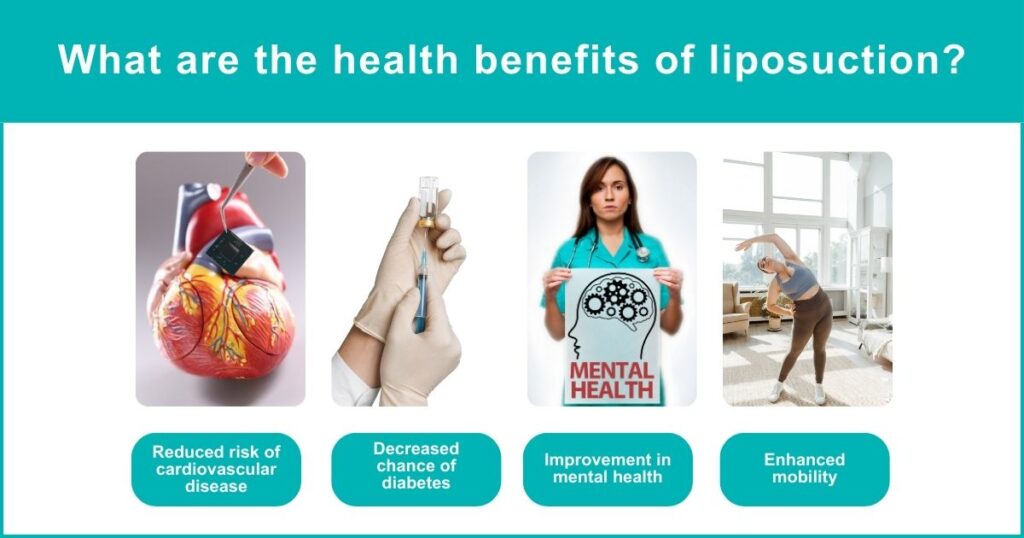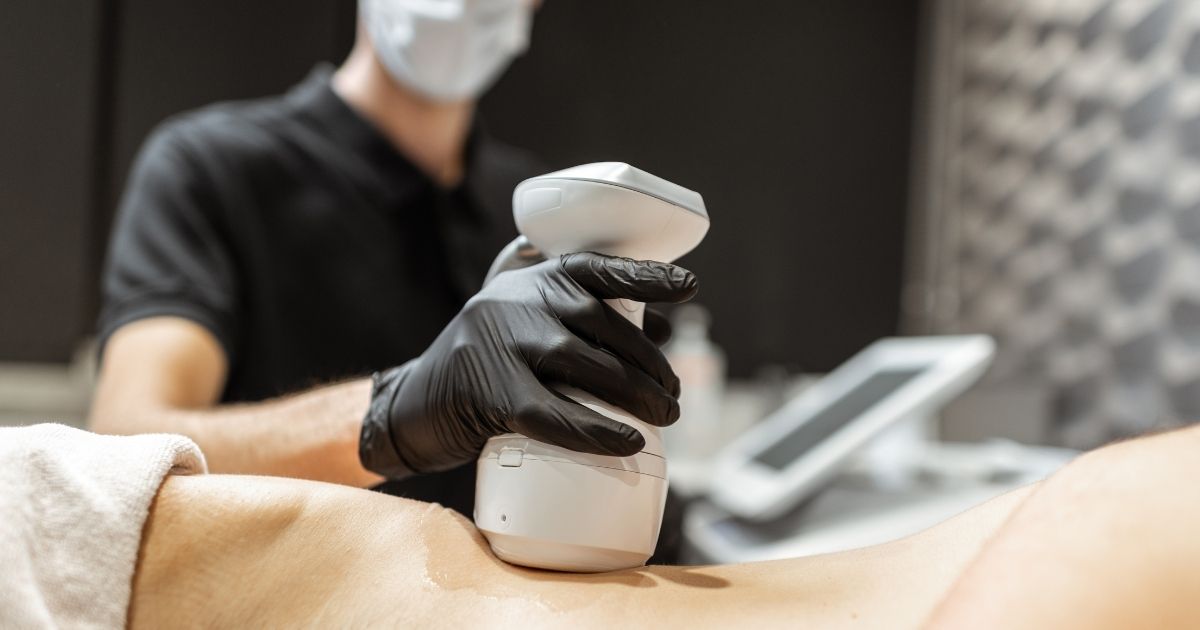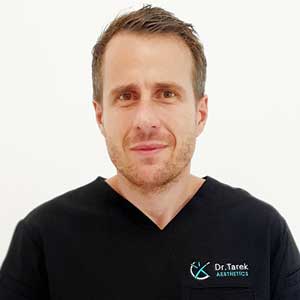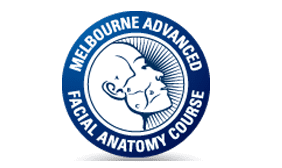Liposuction, a standard cosmetic procedure, significantly contributes to our ongoing pursuit of health and well-being. Although liposuction affects overall health in numerous ways, the relationship is complex and multifaceted. This layered dialogue uncovers an intriguing element of our journey to holistic wellness, highlighting how Liposuction Contributes to Overall Health distinctively and remarkably.
How Does Liposuction Contribute to Overall Health?
Liposuction, or simply ‘lipo’, is when a surgeon removes fat from specific body areas to reshape them. The targeted areas can be the stomach, thighs, hips, buttocks, arms, or neck. Despite its reputation as a purely aesthetic procedure, liposuction offers potential health benefits.
The Health Benefits of Liposuction

Liposuction contributes significantly to overall health. Here are the mentioned benefits:
Reduced Risk of Cardiovascular Disease
Liposuction can reduce certain risk factors for cardiovascular disease. The risk of heart disease increases with excess fat, especially abdominal fat. By removing this fat, liposuction may contribute to improved cardiovascular health.
Decreased Chance of Diabetes
Diabetes is often linked to obesity. Liposuction can help reduce Type 2 diabetes risk through its ability to reduce total body fat.
Book A Consultation With Dr Tarek Bayazid
Top-rated Plastic Surgeon For Liposuction in Dubai
Installment Plan Available
Improvement in Mental Health
Body image and mental health are intimately linked. Liposuction can increase self-esteem and mental health by achieving a desired body image.
Enhanced Mobility
Excess fat, particularly around the hips, thighs, and waist, can restrict mobility. By removing this fat, liposuction can enhance mobility, contributing to a more active and healthier lifestyle.
Why Liposuction Contributes to Overall Health
The procedure’s role in overall health isn’t merely due to its physical effects. Liposuction can be a pivotal point in one’s health journey, as a stepping stone towards a healthier lifestyle. The improved body image can serve as motivation to maintain a healthy diet and regular exercise regimen.
Liposuction as a Part of a Holistic Health Approach
Liposuction, however, should not be viewed as a standalone health solution. An integrated approach to health includes balanced nutrition, regular exercise, adequate sleep, and stress management.
Liposuction and Weight Management
Body contouring procedures such as liposuction are not weight loss tools. It’s about reshaping the body and not about significant weight reduction. Individuals can, however, maintain a healthier lifestyle by gaining improved body shape, thereby assisting in long-term weight loss.
What to Expect with Liposuction Procedure for Overall Health?
You need to manage your expectations, liposuction begins with an initial consultation with a certified plastic surgeon. Surgeons discuss the patient’s health status, the desired outcome, and potential risks.
The liposuction procedure itself usually involves the following steps:
Preparation
A surgeon discusses the potential benefits and risks and assesses the patient’s health status. Anesthesia, either general or local, will be administered.
| Liposuction Preparation | Why It’s Necessary |
| Consultation with a Plastic Surgeon | It allows the surgeon to assess your overall health, discuss your goals, and determine if you’re a suitable candidate for liposuction. |
| Medical Evaluation | This includes a physical examination, medical history review, and potentially some lab tests. It helps identify underlying health conditions that could affect the surgery or recovery. |
| Stop Smoking | Smoking can interfere with the body’s healing process and increase the risk of complications. Quitting smoking before liposuction promotes better healing and reduces the chance of surgical complications. |
| Medication Review | Some medications, such as blood thinners or certain herbal supplements, can increase the risk of bleeding during surgery. It’s important to inform the surgeon about all medications being taken to adjust or stop them before the procedure. |
| Fasting | The surgeon may ask you to fast for a certain period before the surgery to reduce the risk of complications associated with anaesthesia. You’ll be advised not to eat or drink anything for several hours before the procedure. |
| Arrange Transportation | Liposuction is usually performed under anaesthesia, which can impair coordination and judgment. Having someone else drive you home after the surgery is necessary for your safety. |
| Arrange Help at Home | After the procedure, you may need assistance with daily activities, as you may experience temporary limitations in movement and may require help with household tasks. |
| Stock up on Supplies | Gathering necessary supplies like loose-fitting clothing, pain medications (as prescribed), compression garments, and other post-surgery essentials in advance for a smoother recovery is beneficial. |
| Follow Preoperative Instructions | The surgeon will provide specific preoperative instructions, including guidelines on eating, drinking, and taking medications. Adhering to these instructions is crucial for successful surgery and recovery. |
Procedure
The cannula is inserted through tiny skin incisions made by the surgeon. To remove fat, the cannula is moved back and forth to loosen the fat, which is then sucked out using a surgical vacuum or syringe.
| Liposuction Procedure | What It Involves |
| Anaesthesia | The surgeon will administer either general anaesthesia (you’re unconscious) or local anaesthesia with sedation (awake but relaxed) to ensure your comfort during the procedure. The choice depends on the extent of liposuction and your surgeon’s recommendation. |
| Incision Placement | Small incisions, typically less than half an inch long, are strategically made in the targeted areas. The incisions are discreetly placed in natural skin creases or inconspicuous locations to minimise visible scarring. |
| Tumescent Solution | A tumescent solution containing saline (saltwater), a local anaesthetic, and a medication to constrict blood vessels is injected into the targeted areas. This solution helps numb the area, shrink blood vessels, and facilitate fat removal. |
| Cannula Insertion | A thin, hollow tube called a cannula is inserted into the fatty tissue through the incisions. The surgeon moves the cannula back and forth to loosen and break up the fat cells, which are then suctioned out using a surgical vacuum or syringe attached to the cannula. |
| Sculpting and Contouring | The surgeon carefully manoeuvres the cannula to sculpt and contour the treated areas, removing excess fat and enhancing the body’s shape and proportions. The technique used can vary, such as traditional liposuction, ultrasound-assisted liposuction, or laser-assisted liposuction, depending on the surgeon’s preference and the patient’s needs. |
| Incision Closure | Once the desired fat removal and contouring are achieved, the incisions are closed using stitches, surgical tape, or adhesive strips. In some cases, the incisions are left open to allow for drainage. |
| Compression Garments | Compression garments or elastic bandages are applied to the treated areas to reduce swelling, help the skin adhere to the new contours, and aid in healing. These garments are typically worn for a few weeks after the procedure. |
| Recovery and Follow-up | After the procedure, you’ll be monitored in a recovery area for a few hours before being discharged. Your surgeon will provide detailed post-operative instructions, including care for the incision sites, pain management, activity restrictions, and follow-up appointments to monitor your healing progress. |
Recovery
Post-procedure, individuals may experience swelling, bruising, and soreness in the treated areas. Compression garments or elastic bandages may be used to reduce these symptoms.
The healing process is gradual. Many weeks to months can pass before the swelling subsides, and the full impact of the surgery might only become apparent six months afterwards liposuction.
| Healing Stages after Liposuction | Description |
| Immediate Post-Operative Period | Right after liposuction, you’ll experience some swelling, bruising, and possibly mild discomfort or pain. Your incisions may be covered with dressings or bandages. Following your surgeon’s instructions for wound care, pain management, and wearing compression garments is important. |
| Initial Recovery (1-2 Weeks) | Swelling and bruising will subside during this stage. You may still have some discomfort but should improve each day. You’ll be advised to take prescribed pain medications, wear compression garments, and engage in light activities. Follow-up visits with your surgeon may occur. |
| Intermediate Recovery (2-4 Weeks) | Swelling and bruising will continue diminishing, and you’ll start noticing improvements in the treated areas. Your surgeon may advise you to transition from compression garments to lighter support garments or discontinue them altogether. You can gradually resume more normal activities, but strenuous exercise and heavy lifting should still be avoided. |
| Advanced Recovery (1-3 Months) | By this stage, most of the swelling should have subsided, and you’ll see the final results of your liposuction. Your body will continue to heal, and the skin tightens to conform to the new contours. Your surgeon may recommend scar care treatments or massage techniques to aid healing. |
| Long-Term Recovery (6-12 Months) | Although most of the healing occurs within the first few months, your body will continue to refine its appearance for up to a year post-surgery. The final results, including improved body contours, smoother skin, and minimised scars, will become more apparent during this time. Maintaining a healthy lifestyle, including proper nutrition and exercise, can help preserve and enhance liposuction results. |
The Role of Diet and Exercise Post-Liposuction
Diet and exercise should not be substituted for liposuction. Maintaining a balanced diet and regular exercise post-surgery is crucial to sustaining the results.
Healthy Diet
Maintaining optimal body function and aiding in healing after liposuction requires eating fruits, vegetables, lean proteins, and whole grains.
Regular Exercise
Once fully recovered, incorporating regular exercise into one’s routine is recommended. This helps maintain the results of liposuction and promotes overall health and well-being.
Liposuction’s Contribution to Aesthetic Health
There are many myths about liposuction in our society. While liposuction’s contribution to physical health is noteworthy, it’s important to also consider its impact on aesthetic health. Aesthetic health is a concept that recognises the significance of physical appearance in our overall well-being. By improving body contour and shape, liposuction can positively impact an individual’s aesthetic health, leading to increased satisfaction and self-esteem. Understanding liposuction costs in Dubai can help you make an informed decision about this procedure.
Liposuction contributes to overall health in numerous ways. When employed correctly, it acts as a catalyst to stimulate healthier lifestyle choices and contribute to comprehensive well-being. A balanced lifestyle, a nutritious diet, and regular physical activity are the cornerstones of success after liposuction.
Liposuction has the potential to be a transformative procedure, but its success is significantly reliant on the proficiency of the surgeon performing it. Dr Tarek, an esteemed practitioner, has a particular speciality in liposuction procedures, continuously working towards enhancing body contour and overall health.
At Dr Tarek Bayazid, our dedication is to assist you in understanding how liposuction can complement your health goals. So book a consultation and explore how liposuction could enhance your overall health today.
Discover the transformative benefits of our advanced Double Chin fat removal surgery, where Dr. Tarek Bayazid employs state-of-the-art techniques to sculpt and redefine your facial contours with precision and expertise











Related Posts